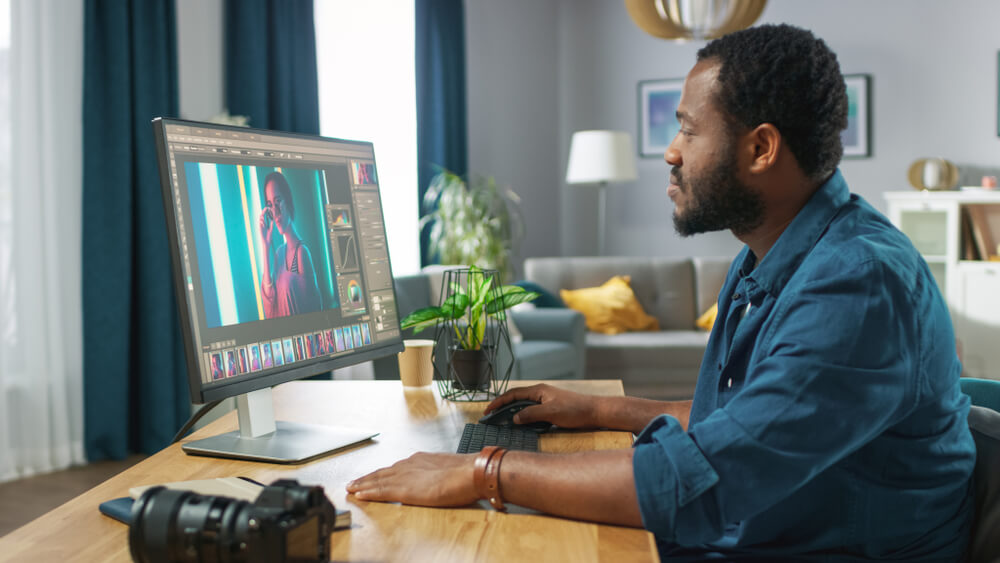If your dream is to play video games for a living and be the next Valkyrae or Pokimane, you shouldn’t expect to make those big bucks right off the bat. It will take dozens if not hundreds of hours of live streaming. And you’ll have to prove you have both the gaming skills and the narrative ability to draw viewers in and keep them watching.
You’ll also want to make sure your skills and storytelling aren’t held back or blocked by your technical setup. Nothing is more frustrating than knowing you’re creating great content but nobody can find it because you don’t have the right gear.
What is a VOD and how is it different from live streaming?
Streaming on Twitch is great, but if you want to build an audience, achieve stardom, and land those endorsement deals, you’ll want a way to record your game stream so people can watch asynchronously. That’s where VODs (videos on demand) come in. A VOD is essentially just videos of previously streamed sessions that your fans can watch at a later date in case they’re new to your content or simply couldn’t make the session in question.
The good news is that if you’re building a game streaming setup (essentially your own little production studio), you can pretty much use that for creating VODs. As with so many endeavors in this crazy world of ours, how elaborate your setup is will likely come down to how much money you can spend and how much time you can commit to doing the work outside of playing games. The good news, though, is that there are a number of (relatively) inexpensive ways to make your one-room Hollywood more efficient for you and your crew (i.e. probably also you).
The best streaming gear and equipment to get you started
Alright, so to get down to the nuts and bolts of it, what equipment do you need for a gaming channel? Jeff Stegner is a product manager at Elgato, the maker of some of the best streaming equipment on the market, and has been a content creator in his own right for about the past ten years. Here’s the gear he recommends as someone who’s spent ample time on both sides of the business:
- A webcam: If you’re just starting out, Stegner cautions against springing for an expensive camera. There are two main reasons for this. First, you’ll likely incorporate video game footage into your VOD, and that footage (which should be high quality) won’t come from your camera. Second, for most recent-model phones, “the quality you can get out of them is quite remarkable,” he says. Then, to integrate your phone footage into your setup, download an app like Elgato EpocCam. It’s inexpensive ($7.99 at the time of writing) and allows you to use your phone just like a webcam.
- A microphone: “With a limited budget, I would give the lion’s share of it to the microphone because [it] has arguably the most value,” Stegner says. As beautiful as your cherubic face may be, it’s likely not your audience’s top watching priority. They want to see you play video games and talk about it while you’re in the game, and that means you want top-tier audio quality. Stegner recommends the Elgato Wave:1 since it gives you access to software that makes streaming and mixing easier than some higher-end models. Depending on your setup, you may also want to invest in a mic stand to properly position the mic.
- Screen recording software: This one’s a bit of a no-brainer, but if you’re recording a VOD, you’ll want software that lets you record video and audio of your exploits in-game and allows for a webcam feed of your face. One popular choice among gamers is OBS Studio since it’s free and relatively easy to learn.
- Lighting: Your instinct may be to spring for one of those super professional-looking softbox kits, but Stegner says there are better options—namely, free ones. For example, his top rec? “Natural sunlight. Shooting near a window during the daytime can yield beautiful results.” Otherwise, he recommends bouncing lamp light off your walls or even bringing up the Google homepage on light mode to let all that free bright white goodness illuminate your features.
- A green screen: You can make your streams and VODs more visually interesting by using a green screen, where you can change your background to your heart’s content (or just hide the pile of clothes on your bed). Of course, you don’t necessarily need a green screen. Lighting it properly can require finesse, and chroma keying out your background will ultimately add time to your video editing process.
- A capture card: If you’re playing games right on your PC, you won’t need a capture card since its primary function is to pass footage from an external device over to your game recorder of choice. In other words, screen recording software is sufficient for PC gaming. If you have, say, an Xbox, on the other hand, you’ll need to use a capture card to pass that footage over to your computer.
- A video switcher: This is another one in the “ooh la la” category, mainly because you don’t need to stream from multiple webcams. But for the truly aspirational Twitch streamer, a video switcher allows you to easily cut between feeds from your various cameras, if you have more than one.
- A headset: The classic fashion accessory for the serious gamer, a headset is necessary if you’re engaged in online play and communicating with your teammates. But if you’re a speedrun fiend or going solo, it’s skippable.
- A solid PC: Some gamers swear by a two-PC setup: one for running the game at maximum performance and another for encoding the footage. Stegner advises not to waste your money. “Virtually all graphics cards from Nvidia, Intel, and AMD have [hardware] encoders, and they’re an incredibly powerful tool for single-computer recording or streaming,” he says. Since the game isn’t relying on the encoder to run at peak efficiency, purchasing a graphics card with an encoder is a great way to save money (and space) in your setup.
Final thoughts
Obviously, the cost of all of that gear can add up, so unless you start getting really serious about streaming or find that you have an irresistible charm the masses can’t get enough of, it’s a good idea to start small. Start by streaming from your phone and rely on the lighting you already have. Leave the more advanced stuff on your wishlist until you’ve figured out whether streaming is the life for you.


































